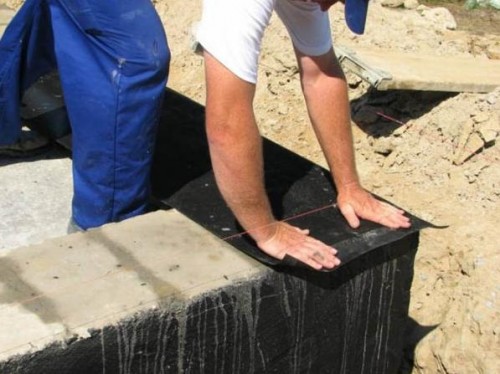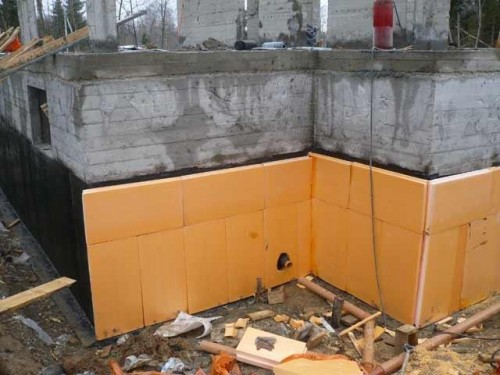
Roll waterproofing of the foundation with their own hands Insulation,Construction
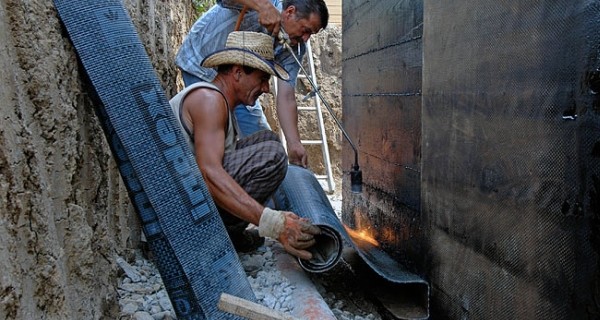
To protect the supporting structures of the building from the destructive effects of groundwater, rolled waterproofing of the foundation is used. The issue price is the lack of dampness in the premises, mold, long service life of the foundation, walls and the whole structure as a whole.
Content
Advantages and disadvantages of the method
The advantages of rolled waterproofing include:
- relatively low cost of materials used and their large selection;
- ease of installation;
- high degree of reliability and long service life;
- the possibility of performing work in a short time;
- flexibility to protect the foundation of a complex form;
- The ability to perform rolled waterproofing of the foundation with your own hands. There is no need for special training of employees, no use of complex tools and devices is required.
There are also disadvantages:
- the need to participate assistants;
- the use of open fire in the installation process;
- the complexity of reliable stool processing;
- low mechanical strength.
Types of waterproofing, additional measures to protect against groundwater
There is vertical and horizontal waterproofing. The latter is designed to separate the foundation and exterior bearing walls. It creates a barrier for the capillary lifting of groundwater. Performed by laying several layers of rubberoid with bitumen mastic on the horizontal surface of the foundation. It is necessary to hermetically shy horizontally and vertically located layers of insulating material: they must form a monolithic hydrobarrier.
For greater efficiency of the protection of the building from groundwater, a drainage and storm watersystem systems are mounted. This measure is designed to reduce the amount of moisture contained in the soil in the spring (during the flood) and the amount of rainwater absorbed. As a result, the load on waterproofing materials applied to the foundation is reduced.
Roll waterproofing is well combined with other methods of protection. A bitumen and front-end method is used, in which the number of layers applied to the base of the mastic reaches four. This allows you to apply only one layer of rubberoid.
The rubber-terminal method involves the use of liquid rubber instead of bitumen. Liquid rubber is characterized by better adhesion to any material (compared to bitumen mastic) Therefore, it is necessary to twice less for reliable gluing. It is not necessary to warm up the runneroid: it glues well with rubber and creates durable waterproofing.
To protect economic buildings, a combination of a clay castle and rubberoid is used. Rolled material is superimposed on the base, and clay plays the role of a protective buffer that prevents damage. The method is highly reliable and low cost.
Vertical waterproofing of construction workers
The waterproofing of the foundation by rolled materials is performed at the stage of the foundation and during overhaul. To do this, the runneroid, isoplast, only, parchment, etc. is used.
Work on the sticker of the insulating layer on the outer walls of the foundation in operation is somewhat different from the method of protecting the buildings under construction. You must do the following:
1. Fully open the foundation. It should be borne in mind that free space is required to work with the frontier.
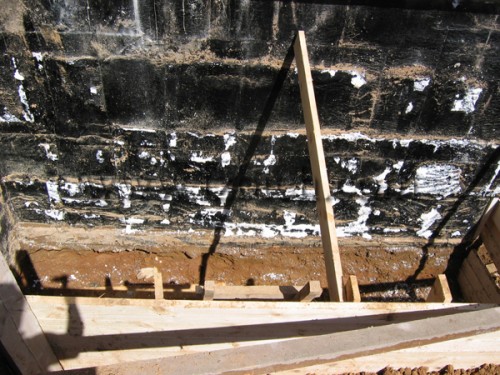
2. Carefully clean the treated surface from the soil, oil spots and paint. This uses scrapers, metal brushes, hydraulic pumps.
3. Foundation walls completely drag. It is performed in a natural way in the warm season (for the week) in the absence of precipitation or with the help of heat guns.
4. The surface of the foundation is examined: the detected cracks are closed with a solution, the irregularities exceeding 10 mm are eliminated. It is necessary for uniform styling of the insulator (in order to avoid the formation of cavities).
5. A layer of bitumen mastic divorced in proportion of 1/3 with gasoline is applied to the treated surface, thoroughly shouting all the slots. The use of cold processing mastic eliminates the need to use open fire (at this stage), which facilitates and speeds up the process.
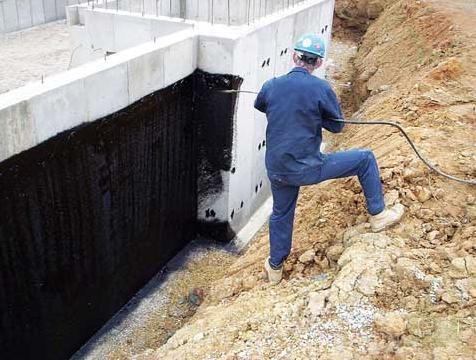
6. To align the rolled material, it is previously unwound and folded near the place of execution. In the absence of a free area, rolls are rewinding in the opposite direction.
7. On top of the mastic, rolled waterproofing of the foundation is performed on top of the foundation (photo clearly demonstrates the process): The roll is heated by a gas burner or a soldering lamp and is glued downward. The nestling of adjacent cloth should be within 100-150 mm.
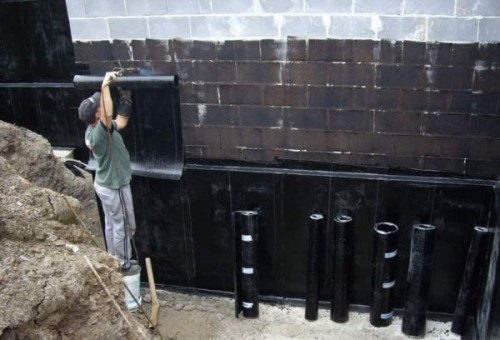
8. After laying the runner regenerate and wipe the mastic, paying special attention to the joints. Insulation will be more reliable if you put it in two layers.
9. After cooling the waterproofing layer, the foundation and the soil seal is performed. Caution is observed: the damage to the material is unacceptable).
Protection against groundwater foundations of buildings under construction
The rolled waterproofing of the foundation (video is attached) the building under construction is planned in advance, and therefore part of the land work is excluded. All other stages are performed (for some exceptions) in the same way.
Special attention is paid to the quality of the outer surface of the base: the protruding pieces of fittings are cut in front of the rolled waterproofing of the foundation, sharp corners are knocked down so that the rubberoid is damaged during the installation process.
Before filling to protect against mechanical damage, the isolated surface is closed with plywood shields or plates of extruded polystyrene foam. It is also necessary for the insulation of the foundation.
Waterproofing walls from the inside
In the event that the insulation of the foundation wall is impossible (in urban conditions), work is performed from the inside. This does not fully protect the structural elements, but reduces the degree of destructive impact of groundwater. During the implementation of such waterproofing, the rolled material is placed on the walls and on the floor of the basement in two or three layers.
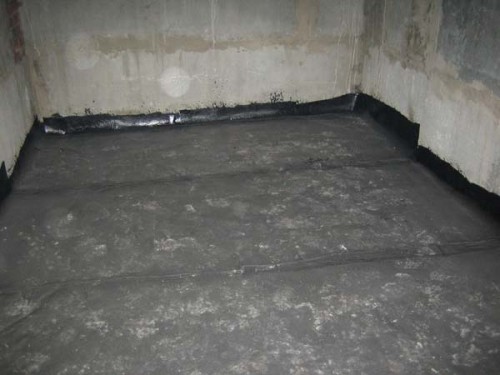
The use of open fire in this case is unsafe, so instead of warmed mastics use cold. A cement-sand screed with a thickness of at least 50 mm is arranged on top of the rubberoid on the floor: it is necessary to protect the material from mechanical effects.
Useful advice
1. When moltening a bitumen in the form of briquettes, a spent engine or transmission oil is added to it in the amount of 1/5 of the total mass. This additive increases the viscosity of the mixture.
2. You cannot use a blind, old runneroid: in the process of installation on the processed surface, cracks are formed.
3. To increase the service life of the rubberoid, use heat treatment and special masts.
4. The work is performed in the warm season: in Claus, the rubberoid becomes breaking. Optimal is the temperature in the range of 15-25 ° C.




